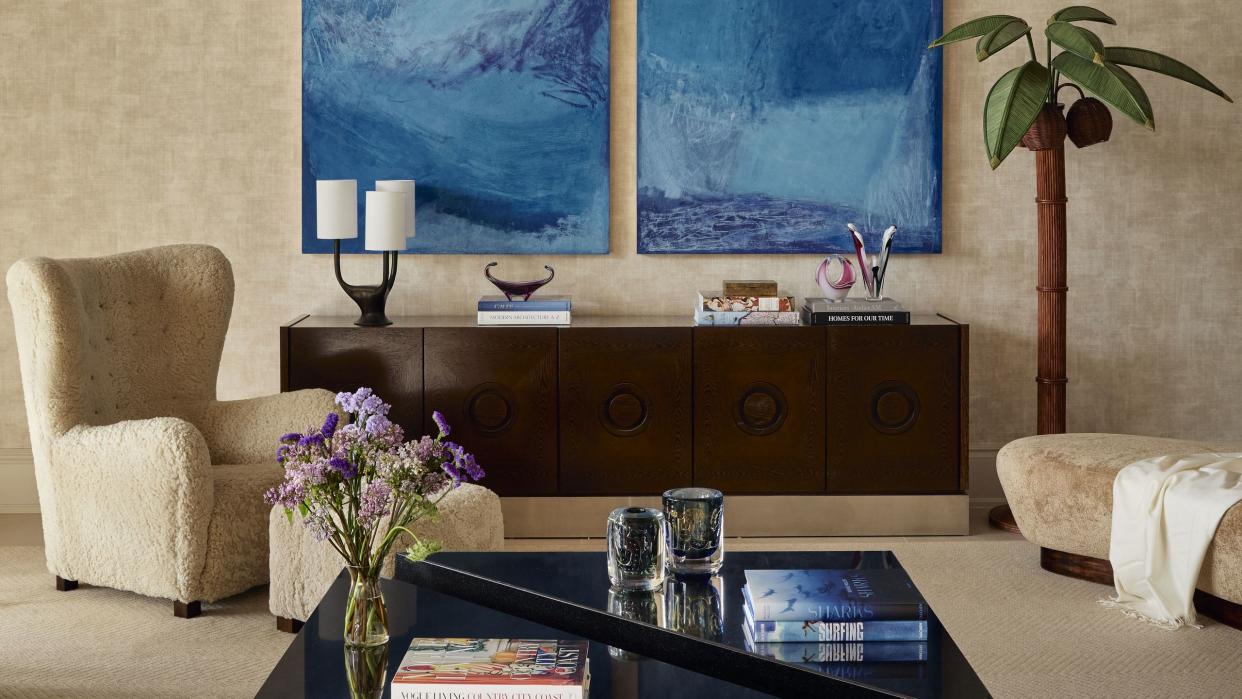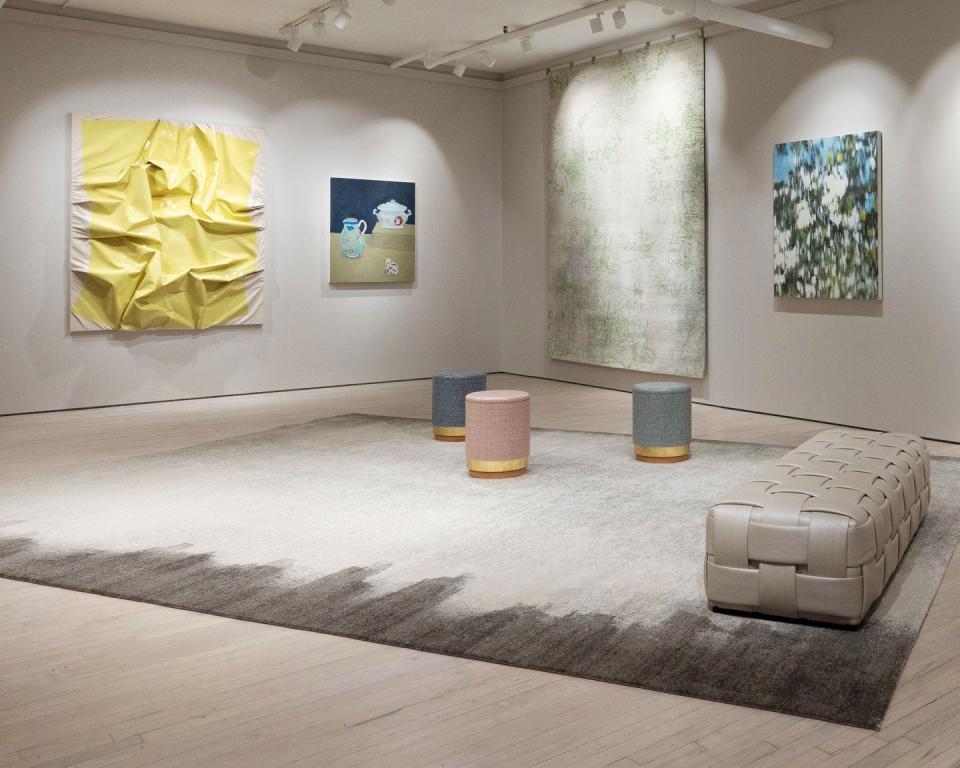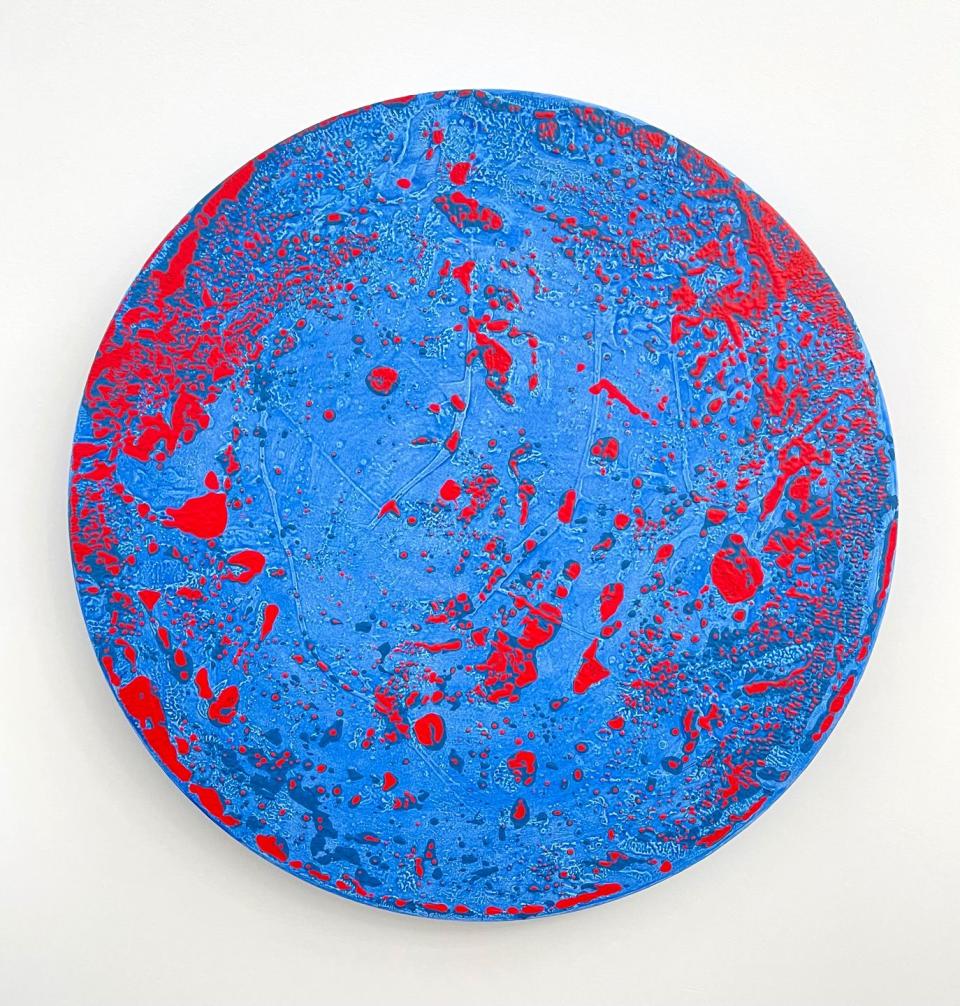How to Buy Art That Will Look Great in Your Home

Above: Art consultant William Li helped designer Eddie Ross to pick the art by Stephanie Massaux for this Florida living room.
As the artist Jean-Michel Basquiat once said: “Art is how we decorate space; music is how we decorate time.” A home without either art or music is a space without soul. But while it is easy to fill a room with music, finding art for your home is trickier. Should the art come first—or the decor? And even when you find a piece you love, it might still be out of reach. “Let’s be honest—galleries don’t make it easy for buyers,” says William Li, a longtime publishing veteran (he is a contributing editor at ELLE DECOR) and a former executive at Ralph Lauren Home. “Artworks are often not priced, and the atmosphere can be intimidating. When I first started collecting, I didn’t even know how to express interest in a piece.”
Li has since become a veteran collector of art, and last year he started Armature Projects, an art consultancy aimed at bridging the gap between the worlds of art and design. He specializes in works by emerging and midcareer artists, while helping to create art collections for homeowners as well as the design community. The latter group includes architects and design firms Eddie Lee and Williams Lawrence and ELLE DECOR A-List firms Ashe + Leandro, Mark Cunningham, and Young Huh.

Through Armature Projects, Li also mounts exhibitions at Fort Street Studio, a rug gallery in New York. The current show, “Surface” (through April 30), includes works by painters—from Stephanie Massaux to Alex Schuchard—whose canvases are marked by texture and tactility.
We asked Li for his top tips on buying art for the home.
Discover Your Taste
“Take some time to explore different styles, mediums, and artists to identify what resonates with you,” Li counsels. He recommends visiting galleries and museum shows and browsing online platforms to get a sense of art that appeals to you. Define your collecting goals and preferences, whether you focus on a specific artist, style, medium, or theme. “Understanding your preferences will guide your purchasing decisions and help you create a cohesive collection,” he says.

Set a Budget
Start by deciding how much you’re willing to invest in art and establish a budget that aligns with your financial goals. Remember to consider not only the cost of the artwork, Li warns, but also potential expenses such as framing, shipping, and installing. Cultivate relationships with galleries, artists, and art consultants who can provide guidance, expertise, and access to a wide range of artworks.
Also, when purchasing art, prioritize quality over quantity. “Invest in well-crafted, authentic artworks that resonate with you emotionally and intellectually, rather than chasing trends or seeking quick returns,” Li says. “Quality artworks tend to appreciate in value over time and can become cherished heirlooms that enrich your life and home.”
Pick Art That Suits the Room
When designer Eddie Lee was working on a project in Florida, he tapped Li to help choose art that would suit the space. For a living room, they landed on a quadriptych by Stephanie Massaux that beautifully balances the console below. “The function of the room should influence the size of the artwork you choose,” Li says. “For example, a large statement piece might be suitable for a living room or dining room where it can serve as a focal point, whereas smaller artworks might be more appropriate for intimate spaces like bedrooms or hallways.”

When selecting art, aim for balance and proportion to both fit the size of the wall and work visually with the surrounding furniture. “As a general rule, the artwork should occupy about two-thirds to three-quarters of the available wall space,” he adds.
Let Art Inspire Your Decor
Begin by selecting a piece of art that you love and want to showcase in the room, Li says. Whether it’s a painting, sculpture, or photograph, let the artwork guide the design direction and overall aesthetic of the space. Take cues from the artwork itself in terms of its mood, style, and color palette. Is it bold and vibrant? Subtle and serene? Abstract or representational? Use these characteristics to inform your design choices, from furniture and decor to wall color and accessories.
“And if you want to ‘match’—nothing wrong with that!” Li adds. “Pull colors directly from the artwork to use throughout the room, creating a cohesive color scheme that ties everything together. Choose complementary hues for walls, furniture, and accents to enhance the visual impact of the art and create a harmonious atmosphere.”
Remember to Take Care of Your Art
“Climate control is one of the most important things to consider when dealing with art,” Li observes. “Extreme temperatures, humidity, and fluctuations in environmental conditions can damage artwork over time.”
Avoid hanging art in areas prone to direct sunlight, and keep precious works out of humid zones like bathrooms and away from heat sources like radiators or fireplaces. Li invests in proper framing and mounting to protect artwork. “While there isn’t necessarily a specific format to avoid universally, certain mediums or materials may require extra care or consideration,” he says. “For example, delicate works on paper may be more susceptible to damage from moisture or bending, while fragile sculptures may require special handling and support to prevent breakage.”
You Might Also Like


